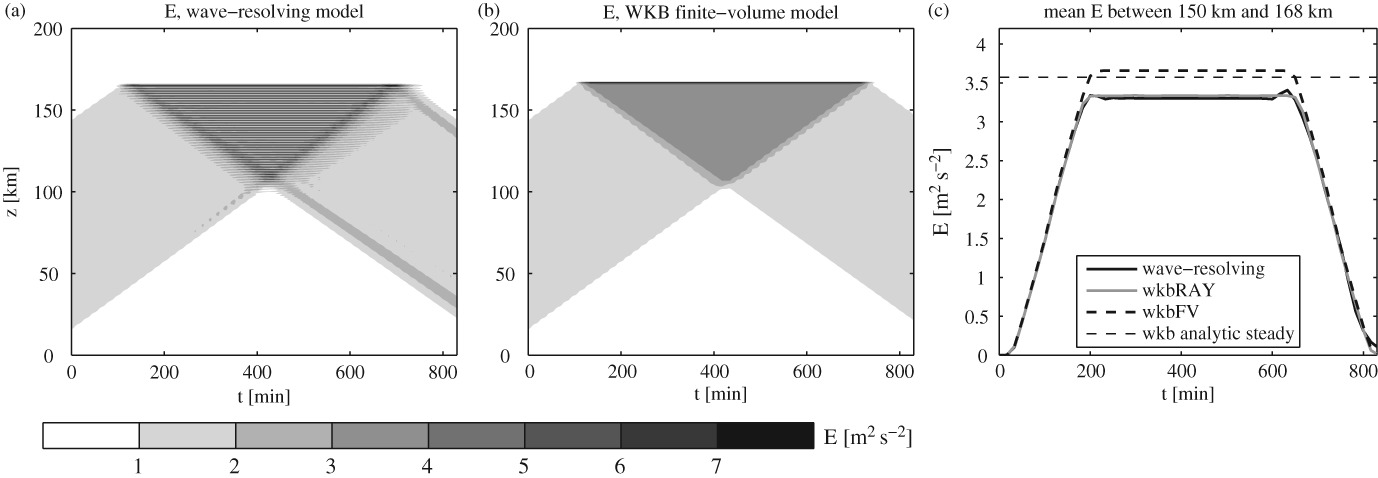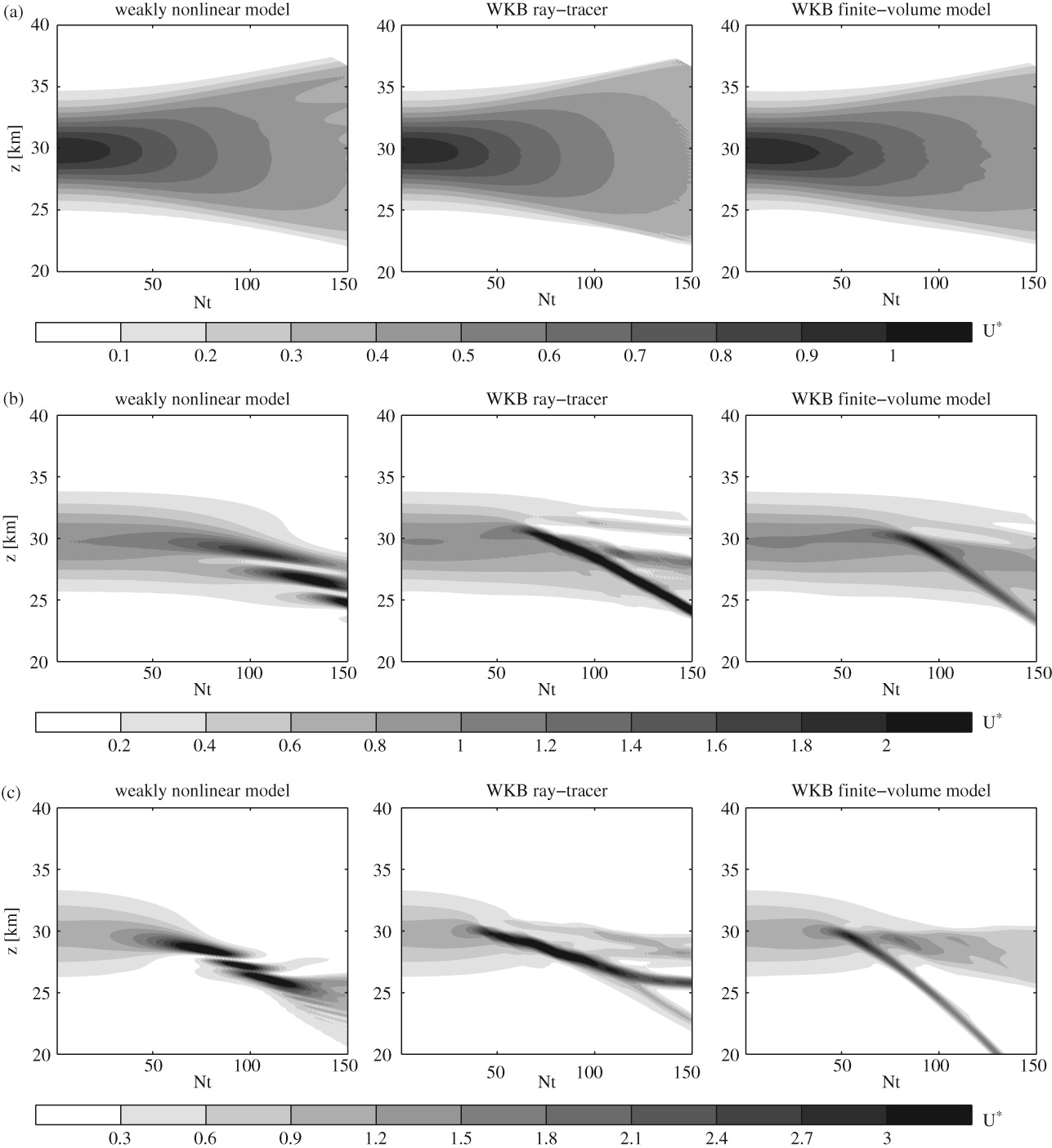J. Muraschko, M.D. Fruman, U. Achatz, S. Hickel, Y. Toledo (2015)
Quarterly Journal of the Royal Meteorological Society 141: 676-697. doi: 10.1002/qj.2381
The dynamics of internal gravity waves is modelled using Wentzel–Kramer–Brillouin (WKB) theory in position–wave number phase space. A transport equation for the phase-space wave-action density is derived for describing one-dimensional wave fields in a background with height-dependent stratification and height- and time-dependent horizontal-mean horizontal wind, where the mean wind is coupled to the waves through the divergence of the mean vertical flux of horizontal momentum associated with the waves.
The phase-space approach bypasses the caustics problem that occurs in WKB ray-tracing models when the wave number becomes a multivalued function of position, such as in the case of a wave packet encountering a reflecting jet or in the presence of a time-dependent background flow. Two numerical models were developed to solve the coupled equations for the wave-action density and horizontal mean wind: an Eulerian model using a finite-volume method and a Lagrangian ‘phase-space ray tracer’ that transports wave-action density along phase-space paths determined by the classical WKB ray equations for position and wave number. The models are used to simulate the upward propagation of a Gaussian wave packet through a variable stratification, a wind jet and the mean flow induced by the waves. Results from the WKB models are in good agreement with simulations using a weakly nonlinear wave-resolving model, as well as with a fully nonlinear large-eddy-simulation model. The work is a step toward more realistic parametrizations of atmospheric gravity waves in weather and climate models.



